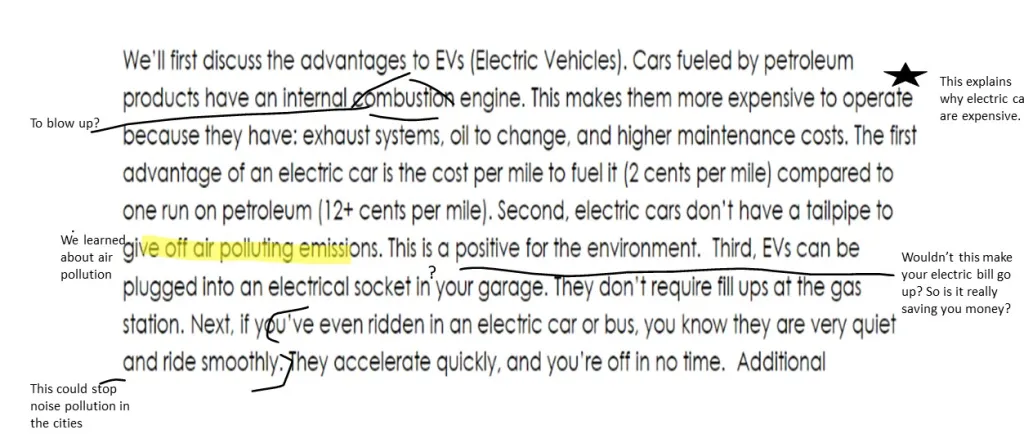As part of my guest blog series, I’ve asked Theresa Kennedy, an ELA middle school teacher, to share tips for making reading a great part of your science classroom. In today’s blog, she shares ideas on how to teach your students to annotate their non-fiction texts. Thanks, Theresa! – Chris
“It’s time to read, Class!”
Have you noticed how students’ eyes glaze over when reading a non-fiction passage they don’t understand? Their lack of engagement motivated me to start using annotation. It’s a strategy that helps students do something while they are reading. When I add a small task for the students, I’m instantly increasing their engagement. This helps bring the text to them.
If you struggle with helping students think about what they are reading, you’re not alone. As they read, some students focus on the words and not the meaning. When students annotate (take notes) as they read, it helps you see what they are thinking and helps students meta-cognate (think about their thinking).

Using a strategy like annotation can also help students slow down enough to process the text. They add questions and important notes as they read. This may seem like a challenging task, but it is easier than most teachers assume!
When I ask my students to annotate, at first I do the process with them. Completing one section of an article together will help students understand what to do.
Three Steps to Reading Comprehension
Step 1: Read the passage together as a group
I like doing this so students can hear all of the words and phrases they may not know. This makes step 2 easier and clarifies the reading to the students.
Step 2: Introduce and explain the annotation prompts
I do this so students can follow along as I model (Step 3). For example, non-fiction prompts might be:
- Place a star
next to the important ideas or powerful quotes. In your own words, rewrite the main idea and why you believe the quote is meaningful to the passage.
- Draw an arrow
pointing at words, phrases, or paragraphs that help you find new information about the topic.
- Highlight any phrases that you can connect to. In the margin, explain your connection.
- Place a rectangle [or brackets] around any phrases that you think are interesting or best state the author’s main idea. Explain what you find interesting on the side.
- Draw a triangle
next to or around any weird or unknown words– try to define them.
- Place a question mark
next to phrases that confuse you. On the side, ask your question and try to answer it.
TIP: Post the prompts on the board or an anchor chart to help students focus their thinking.

Annotated sample: Electric Cars, Science Reading Comprehension Passages, by Kesler Science
Step 3: Demonstrate annotation using the prompts on the selected section
Modeling is an important part of any strategy because it sets the expectations. As I show them each prompt, I have them practice on that section. After that section, I let students try it on their own. After modeling this once or twice, students should be able to begin working independently.
I try to have students examine the text more than once, if possible. Reading it more will not only help the information stick with the students, but also help students catch information they may have missed earlier.
As an ELA teacher, my goal is to make lifelong readers. When you teach students to annotate, you are making sure that they think as they read. You are gifting them with the skill of text comprehension that they can continue to use and develop throughout their lives.
If you want to practice annotation with your students, you may want to use reading comprehension passages like those offered by Kesler Science. When paired with an interesting passage, annotation is a solid strategy to keep students engaged throughout the lesson.
Download Over $100 in FREE Resources
For Middle School Science
Simply create a login below and gain immediate access to a selection of our Kesler Science product line worth $100 - for FREE. There's a full version of every product type! You'll also join tens of thousands of middle school science teachers who receive timely tips and strategies straight to their inbox.




